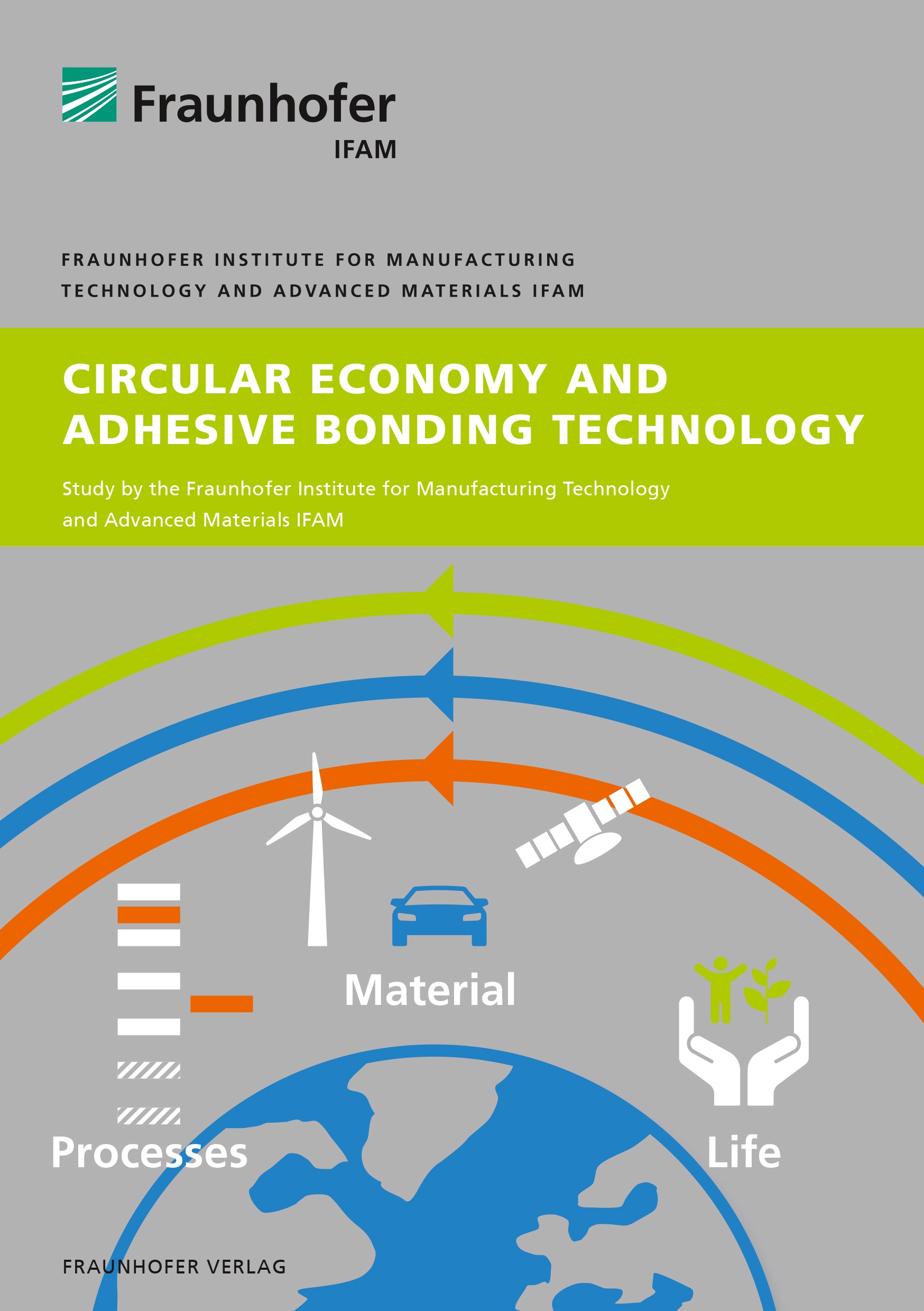Adhesive bonding technology supports circular economy and life cycle assessments - New study by Fraunhofer IFAM


The sustainable use of resources in the production, utilization and disposal of a product is not only determined by legislation, but is also demanded within society. In industry, therefore, material developments and joining technologies are in demand to conserve resources and avoid a linear economy. To achieve this goal, experts from the Fraunhofer Institute for Manufacturing Technology and Applied Materials IFAM have bundled their expertise and published the study "Circular economy and adhesive bonding technology". It describes the role of adhesive bonding technology in the context of circular economy and life cycle assessments in a comprehensive and cross-sectoral manner and classifies it in the political framework conditions from a global and European perspective.
Both within the first international agreement "Agenda 2030 for Sustainable Development" of the United Nations and through the EU action plan on circular economy "European Green Deal", the principle of sustainability and thus the transition to a circular economy along the entire value chain is addressed. Concrete objectives are formulated for the use of resources, the generation of waste and emissions as well as the efficient utilization of energy. Instruments for implementation include longevity, maintenance, refurbishment, reparability, reuse, reprocessing and recycling. Due to these additional complex requirements for a product, the number of materials will continue to increase. The importance of multi-material design will continue to grow and future products will increasingly consist of material compounds. The challenge for joining technology in this context is to maintain the properties of the materials in the product. Therefore, the development of a joining technology is to be regarded as equal to material development. The adhesive bonding technology as a joining technology that requires little heat and does not damage the material thus assumes a key position.
Holistic product life cycle for adhesively bonded products
Due to continuous development of raw materials, adhesives and adhesively bonded products, adhesive bonding technology has gained a high level of acceptance over the past decades. In view of the constantly increasing regulatory requirements, numerous groundbreaking solutions have already been successfully applied through more environmentally friendly adhesive developments. Adhesive technology also has the potential to meet the new legal requirements with technical innovations. In the future, the value-added chains of adhesively bonded products must be viewed holistically and coherently over the entire life cycle, including "production", "utilization" and "disposal". Only in this way, can the team of authors correctly present the possibilities of adhesive bonding technology for the circular economy and at the same time the effects on the corresponding ecological balance sheets of adhesively bonded products from a technical point of view. These potentials are presented in the study using selected applications as examples.
Consideration, evaluation and implementation of the value chain
The challenges resulting from the idea of circular economy require an even closer networking of all actors along value chains and a holistic approach to adhesively bonded products. Raw material and adhesive manufacturers, adhesive users, product manufacturers, end customers and recyclers will form future value-added cycles as part of the "adhesive bonding" system along the life cycle of adhesively bonded products, and will integrate the separation of materials even more strongly into development in the sense of the "end-of-life concept". In particular, the industrially feasible disassembly processes of adhesively bonded products for material recovery or repair will be a key focus of the development process and product testing. To support the implementation, the study shows strategies for all target groups regarding the development of adhesives, product design and disassembly processes.
Digitization will also be a major driver for adhesive bonding technology on the way to a more sustainable circular economy. Digital tools and the availability of detailed material- and process-related data along the entire value-added chain will in future enable the developers of adhesively bonded joints to identify environmentally friendly optima with regard to resource and cost efficiency. On this topic, the study provides valuable insights into the latest research results and introduces the reader to the adhesive bonding technologies of the future.
The study can be downloaded free of charge in PDF format here.
Last modified:
 Fraunhofer Institute for Manufacturing Technology and Advanced Materials IFAM
Fraunhofer Institute for Manufacturing Technology and Advanced Materials IFAM